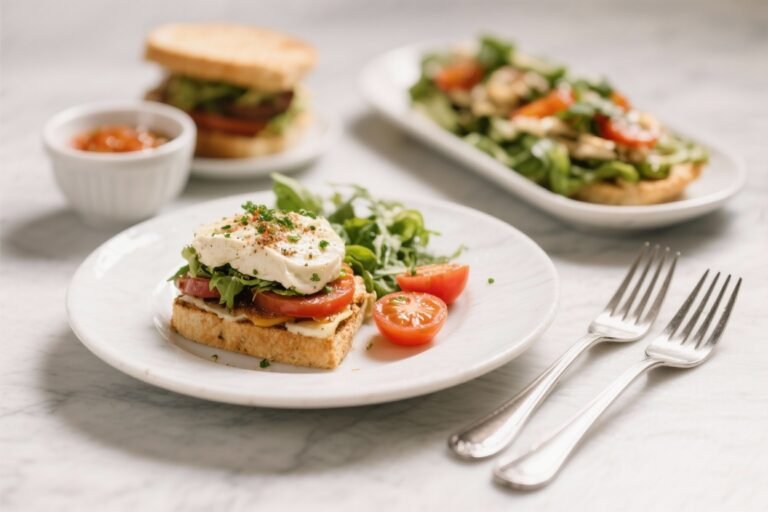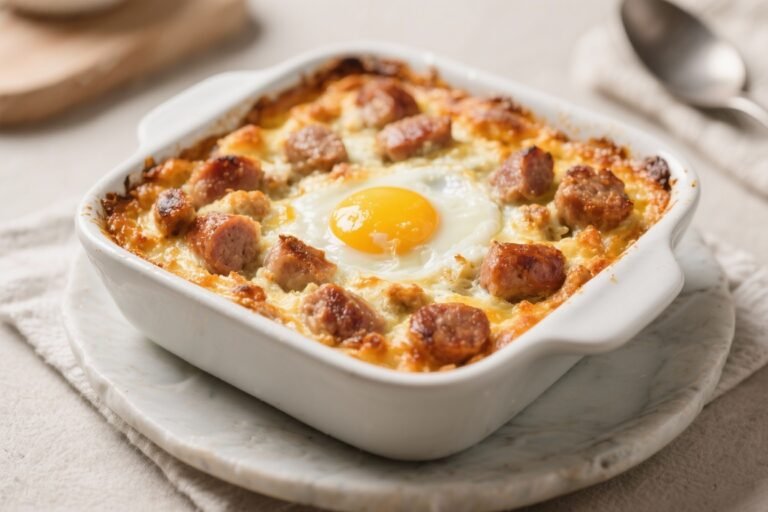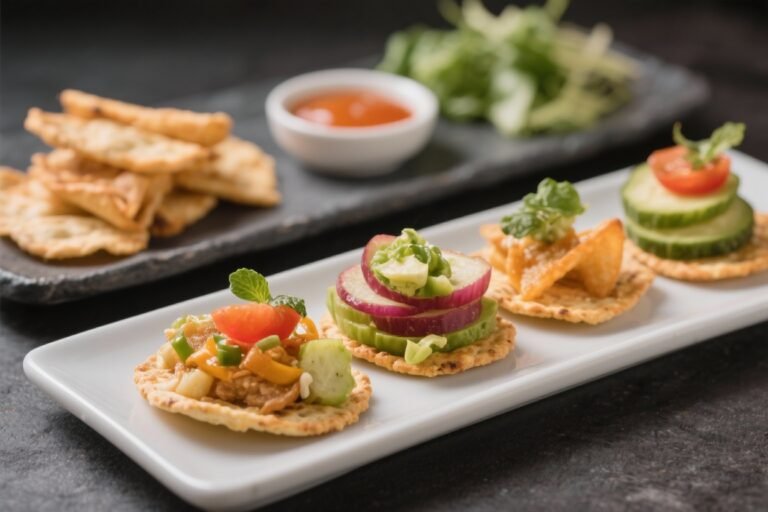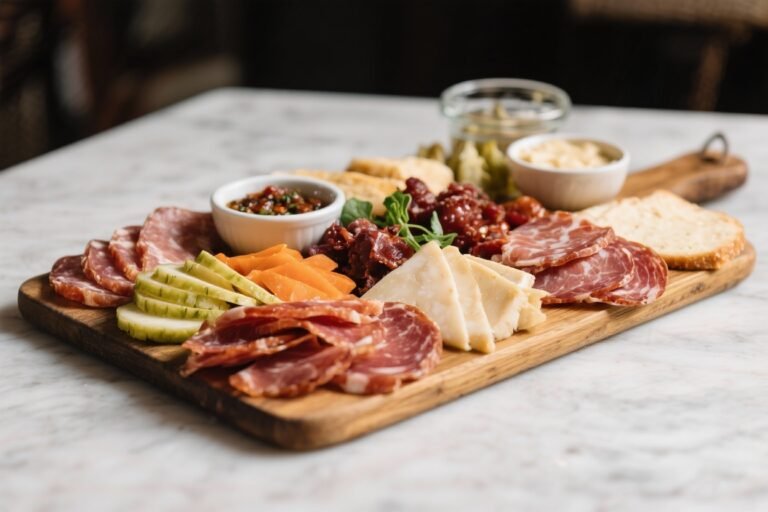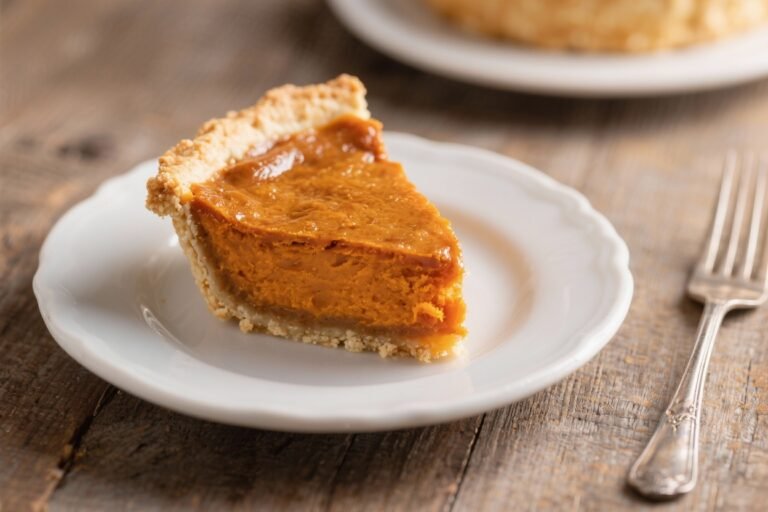Meatloaf Recipes That Don’t Suck: The Juicy, Crispy-Edged Hero Your Weeknight Needs
If your idea of meatloaf is a gray brick smothered in ketchup, prepare to erase that trauma. This version is tender, savory, and honestly a little addictive—like the kind of meal that disappears before the “let it rest” timer goes off. We’re layering umami, locking in moisture, and yes, getting that glorious crust that makes leftovers a prize.
You’ll get the classic comfort you grew up on, plus a few pro moves that make it restaurant-level. Ready for meatloaf that slaps? Let’s build it.
What Makes This Recipe So Good
Moisture insurance from a panade (milk + breadcrumbs) makes the loaf tender, not crumbly.
You’re not chewing a doorstop here.
Bold flavor from a mix of ground beef and pork, plus Worcestershire, onion, and Dijon. This isn’t apologetic meat—it’s confident.
Textural contrast with a shiny, tangy glaze and crispy edges. The ends?
Fight-worthy.
Foolproof method using a free-form loaf on a sheet pan so fat renders away and the sides caramelize beautifully.
Ingredients Breakdown
- Ground beef (80/20) – Fat equals flavor and moisture.
- Ground pork – Adds sweetness and richness; swap with Italian sausage for extra spice.
- Onion, finely minced – Aromatic base; grate it if you want zero chunks.
- Garlic, minced – Non-negotiable.
- Eggs – Bind the loaf without making it dense.
- Panko breadcrumbs – Light texture; regular breadcrumbs work too.
- Whole milk – For the panade; stock works in a pinch.
- Worcestershire sauce – Umami booster.
- Dijon mustard – Gentle heat and tang.
- Kosher salt and black pepper – Season generously.
- Fresh parsley, chopped – Freshness to cut through richness.
- Smoked paprika – Subtle smokiness; optional but recommended.
- Olive oil or butter – For sautéing aromatics.
For the Glaze
- Ketchup – Classic base.
- Brown sugar – Caramelization and balance.
- Apple cider vinegar – Tang to cut the fat.
- Hot sauce or chili flakes – Optional heat, your call.
Step-by-Step Instructions
- Preheat and prep. Heat your oven to 350°F (175°C). Line a sheet pan with foil and set a wire rack on top if you have it—better airflow, better crust.
- Make the panade. In a bowl, stir together breadcrumbs and milk. Let it soak 5 minutes until it’s soft and paste-like.
- Sauté aromatics. Cook the onion in a little oil over medium heat until translucent, 4–5 minutes.
Add garlic for 30 seconds. Cool slightly so it doesn’t scramble the eggs.
- Mix the base. In a large bowl, combine ground beef, ground pork, panade, sautéed onion/garlic, eggs, Worcestershire, Dijon, parsley, smoked paprika, salt, and pepper. Mix with your hands just until combined.
Don’t overwork it unless you like rubbery meatloaf (you don’t).
- Shape the loaf. Transfer to the sheet pan and form a tight loaf, about 9×5 inches. Smooth cracks; they’re escape routes for moisture.
- Whip up the glaze. Stir ketchup, brown sugar, vinegar, and a dash of hot sauce. Brush half over the loaf.
- Bake first round. Bake 30 minutes.
Pull it out and brush with the remaining glaze.
- Finish baking. Return to the oven for 20–30 more minutes, until the center hits 160°F (71°C). If the top needs more color, broil 1–2 minutes. Watch it like it owes you money.
- Rest, then slice. Let it rest 10 minutes.
This is where the juices re-distribute. Slice with a serrated knife into thick slabs.
- Serve smart. Pair with mashed potatoes, green beans, or a crisp salad. Or slap a slice in a toasted sandwich with pickles—elite move, FYI.
How to Store
- Fridge: Store slices in an airtight container for up to 4 days.
Reheat covered at 325°F or in a skillet with a splash of broth.
- Freezer: Wrap individual slices tightly, then bag. Freeze up to 3 months. Thaw overnight in the fridge for best texture.
- Meal prep tip: Pre-slice and glaze a second time when reheating to revive that glossy top.
Benefits of This Recipe
- Budget-friendly: Uses everyday ingredients and stretches to multiple meals.
- High protein, crowd-pleasing: Kids, roommates, in-laws—rare universal approval rating.
- Customizable: Switch meats, seasonings, or glaze without breaking the formula.
- Leftover gold: Next-day sandwiches might be better than dinner.
Controversial, but true.
Avoid These Mistakes
- Skipping the panade: Dry meatloaf is a crime. The breadcrumb-milk mix prevents it.
- Overmixing: Tough texture happens when you knead it like bread dough. Gentle hands.
- Packing too tightly: Airy loaf = tender slices.
Press just enough to hold shape.
- Using only lean meat: Fat is flavor. Mix in pork or choose 80/20 beef, IMO.
- Under-seasoning: It’s a big loaf; it needs salt. Taste a tiny test patty first if you’re unsure.
- Baking in a loaf pan: Traps grease and steams the sides.
Free-form on a sheet pan for crispy edges.
Recipe Variations
- Italian-Style: Swap parsley for basil, add Parmesan and Italian seasoning, glaze with marinara, and dot with mozzarella at the end.
- BBQ Bacon: Wrap the loaf in bacon, use BBQ sauce instead of ketchup glaze, and add a pinch of chili powder.
- Turkey + Veggie: Use ground turkey, add sautéed mushrooms and grated zucchini, and increase the panade to keep it juicy.
- Cheddar-Stuffed: Press half the meat into a loaf, layer shredded sharp cheddar in the center, top with remaining meat, seal edges, and glaze.
- Korean-Inspired: Season with soy, gochujang, ginger, scallions, and sesame oil; glaze with gochujang-ketchup mix.
- Gluten-Free: Use GF panko or crushed GF oats and ensure sauces are certified GF.
FAQ
Can I make meatloaf ahead of time?
Yes. Mix and shape the loaf up to 24 hours in advance, cover, and refrigerate. Add the first layer of glaze right before baking.
You may need an extra 5–10 minutes in the oven if it’s cold from the fridge.
What’s the best meat ratio?
A 50/50 mix of ground beef (80/20) and ground pork is ideal for flavor and moisture. If using only beef, stick to 80/20 and consider a splash more milk or an extra tablespoon of oil in the mix.
How do I keep it from falling apart?
Use the panade, don’t skimp on eggs, and let it rest before slicing. Also, slice with a serrated knife and go thicker rather than paper-thin.
If it still crumbles, you likely under-mixed the binder or overbaked.
What internal temperature should meatloaf reach?
160°F (71°C) in the center. Use an instant-read thermometer and check in multiple spots. Pulling it at 158°F and resting to 160°F is also fair game.
Can I bake it in an air fryer?
Yes, if it fits.
Shape into a smaller loaf, cook at 350°F, and start checking at 25 minutes. Air fryers cook faster due to convection; keep glaze handy and avoid overcrowding.
Why is my meatloaf tough?
Likely overmixing, too little fat, or not enough moisture in the panade. Also, baking in a loaf pan can steam it—go free-form on a sheet pan for better texture.
What can I use instead of milk?
Beef or chicken stock, unsweetened almond milk, or even plain yogurt (thin with water).
The goal is a soft, pudding-like breadcrumb mixture.
The Bottom Line
Great meatloaf is simple: proper fat, a smart binder, bold seasoning, and a sticky-sweet glaze. Nail those, and you’ll get a juicy interior with caramelized edges that rival any roast. Make it once, and it becomes a weekly ritual—especially when those next-day sandwiches start calling.
Low effort, high payoff, zero gray bricks. That’s the move.


